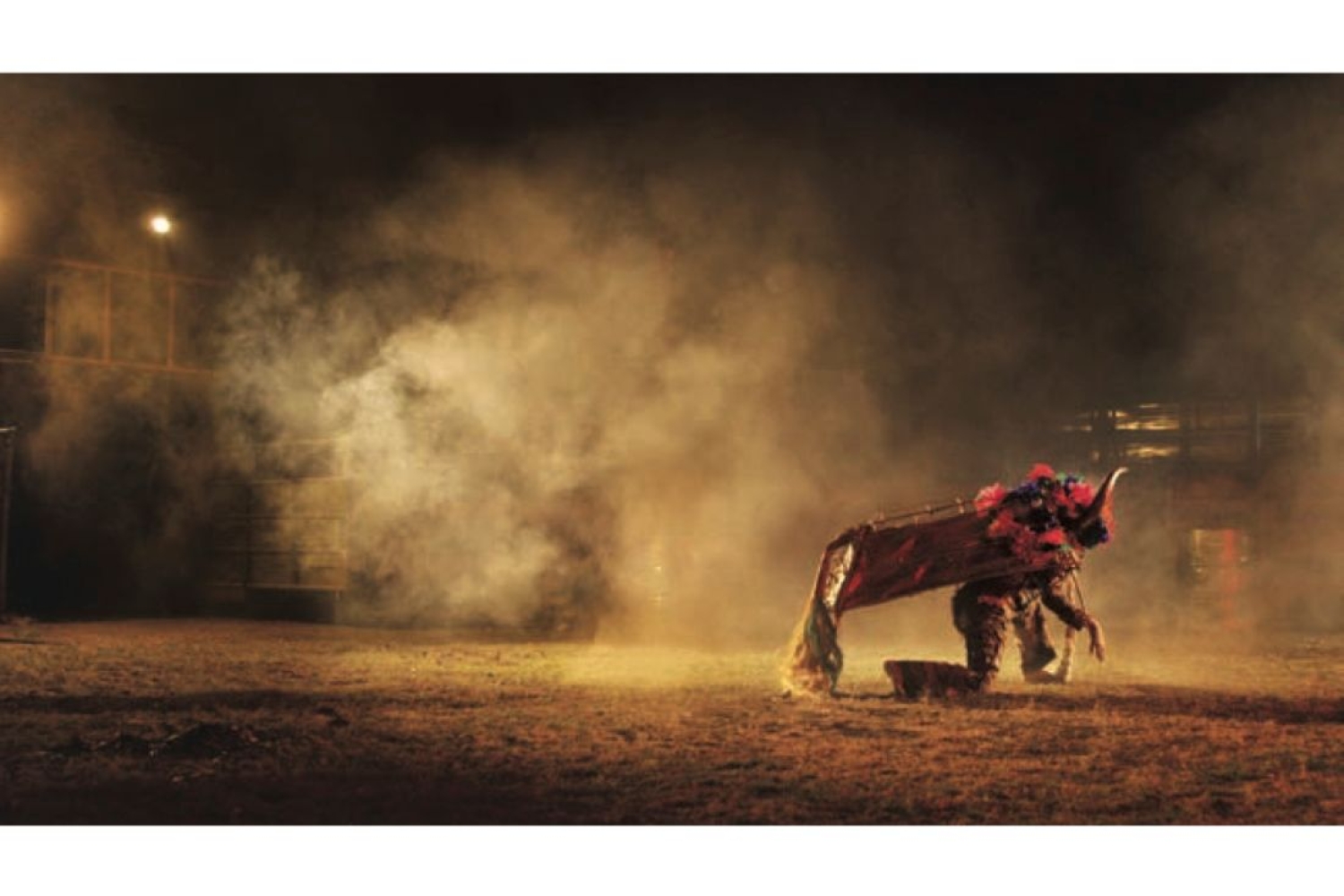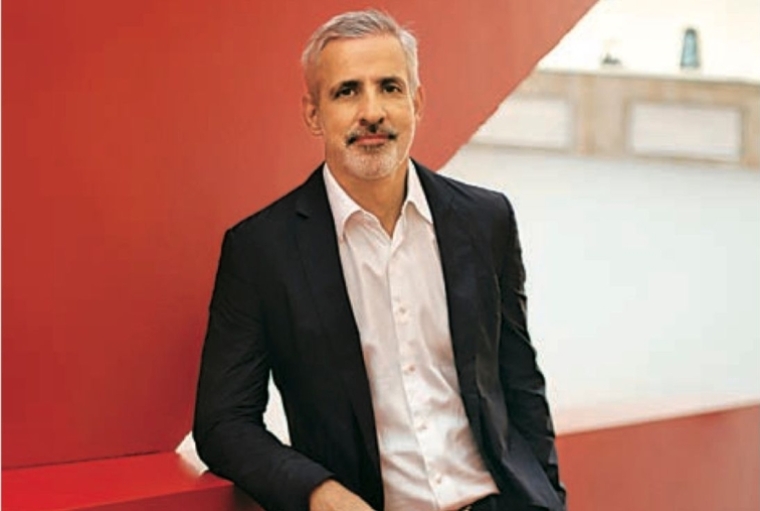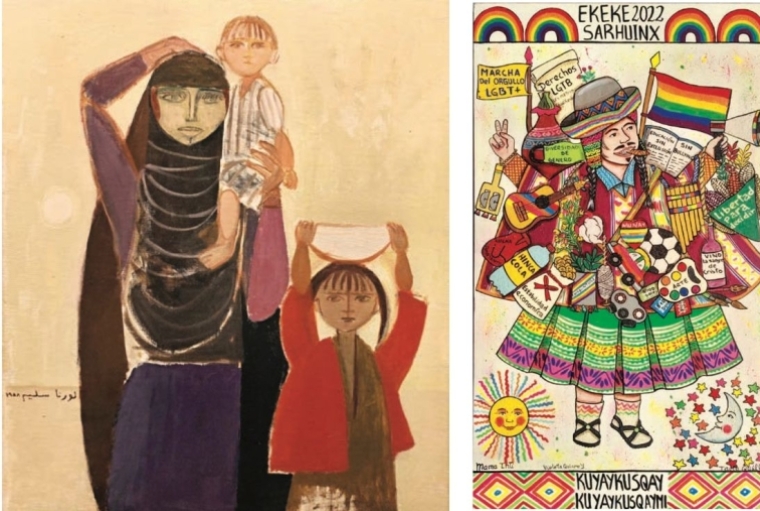
Elyla (Manágua, Nicaragua, 1989 - Lives in Manágua) Torita-encuetada (2023)

Elyla (Manágua, Nicaragua, 1989 - Lives in Manágua) Torita-encuetada (2023)
The curator of the 60th Venice Biennale is Adriano Pedrosa, who is otherwise the artistic director of Sao Paulo’s MASP. His exhibition for Venice is entitled Foreigners Everywhere and is split over two sections: one contemporary and one historical. The overarching concern is to consider “artists who are themselves foreigners, immigrants, expatriates, diasporic, émigrés, exiled, or refugees—particularly those who have moved between the Global South and the Global North.“ With this said, it is clear why the press release states that “migration and decolonization are key themes...”
Given the historical and political backdrop of the exhibition, it is only natural that the work of artists from South Asia have been provided a particular spotlight. There is a strong focus on those Indian, Pakistani, Bangladeshi and Sri-Lankan artists who were active in the mid-20th century, and who were engaged in the cross-border movement referred to in Pedrosa’s statement.
A month before the start of the Biennale, Platform interviewed Pedrosa and asked him to speak more about his thinking in arriving at the subject of ‘Foreigners Everywhere’.
Mortimer Chatterjee: My first question for you was to ask about some of the discoveries maybe you made with respect to South Asia.
Adriano Pedrosa: I have been to India a few times already, several times, since the first Kochi Biennale [in 2012]. So, I’ve been following the scene, [and am] particularly interested in 20th century artists.
I was planning to come to Delhi, it was [during] the India Art Fair and [I was] going to Kochi for the Biennale again. But the government didn’t give me a visa. They don’t tell you why. They just don’t give you the visa. And I had letters from the Biennale and everything. So, it became kind of an anecdote, that here you are, the first curator actually living in, working in, the Global South and trying to do all this research in the Global South around migration and also looking at Modernisms in the Global South; and one of the very first trips that I made, I couldn’t get a visa. But, of course, I had some knowledge already.
The exhibition is divided into two large sections. One is the Nucleo Storico, looking at artists working in 20th century. The majority of them I knew already, but, of course, there were some discoveries as well. The Nucleo Contemporaneo is working with more contemporary artists, mostly living. I told myself from the very beginning that I wanted to have a majority of [contemporary] artists that I had never worked with before. So, per- haps 75% are artists that I didn’t know about or I had not worked with. In terms of the Indian artists... Aravani Art Project was new to me. We have 12 artists either based [in], or who have lived or died in, India in the exhibition. Aravani Art Project are doing this large scale mural for us. Very exciting, because even some of my Indian colleagues didn’t know about them. Monica Correa also, I was not familiar with. She’s in the historical section, in the room devoted to abstractions in the Global South and will have a textile piece from a London collection. Bhupen Kakhar is also a historical artist. We have a historical work in the Nucleo Contemporaneo, but I’ve known the work for more than 10 years or something.
We have four subjects that we’re looking at in the exhibition in the Nucleos of the exhibition: the foreigner, the queer, the outsider as well as the indigenous, because theindigenous is often treated as a foreigner. I am trying to establish connections between artists and dialogues between artists. We have several kind of dialogues, generational dialogues like father and son, mother and daughter, grandfather and granddaughter... We have several couples, about twelve I think, different cases from the very famous of Frida Kahlo and Diego Rivera to Lorna and Jewad Selim from Iraq. We have a father son, Reba and Santiago Yani from Peru, and Andres Curruchich and Rosa Elen, a grandfather and a granddaughter from Guatemala. These different types of pairings is something that emerged organically in the research. I remember being in New Zealand - in Auckland, when this happened, after meeting [father and son] Fred and Brett Graham there.

Adriano Pedrosa
MC: I’d love to ask you about your relationship to previous iterations of the Venice Biennale and our acknowledgement of the fact that, of course, the Biennale is canonical and what it does, in a sense builds on what’s come before, but also lays the ground for what comes after. And I’d love your thoughts not only to those Biennales that you have witnessed, but also how you would like your iteration to be seen in retrospect, let’s say, when someone comes to think about it in another 20 or 30 year’s time.
AP: I think that the Biennale is arguably the most important art event in the world, it is the one that draws most attention and, because of that, it really can play a kind of a crucial role in an artist career, and even in the exhibition history of an artwork itself... I considered this strategically [since] I have this engagement with modernism in the Global South and I have been looking at the 20th century productions for a long time. I think today is easier for a contemporary artist from India or Brazil or Mexico or Nigeria or Argentina or Turkey, to participate in a major exhibition rather than a 20th century artist. I wanted to give this opportunity to these major figures from the Global South. Many of them are in fact canonical figures in their own context and have been the subject of numerous kinds of retrospectives and publications, essays and studies of different kinds. And that’s why I have so many artists from India in the Nucleo Storico exhibi- tion. This has been my approach. I feel that it makes much more sense to put an artist in the Biennale that is not so well-known, not so celebrated, not so canonical, rather than bringing well-known figures. I mean, the city does that. When you come to the city, you will see all these exhibitions by these major figures, right? These canonical figures in thecontemporary or 20th century period.
Each curator has a different approach, which I respect, and we should have like many different approaches, but I think the Biennale should be used very strategically, right? To call attention to other productions, to other artists, and to give this visibility and this opportunity to other artists as well. That was my approach.

Lorna Selim (Sheffield, United Kingdom, 1928-2021, Abergavenny, Wales), Unknown (1958) (left) | Violeta Quispe (Sarhua, Peru, 1989 - Lives em Sarhua), Ekeke (2021) (right)
This is an all exclusive excerpt from our Bookazine. To read the entire article, grab your copy here.
Words Mortimer Chatterjee
Date 22.06.2024